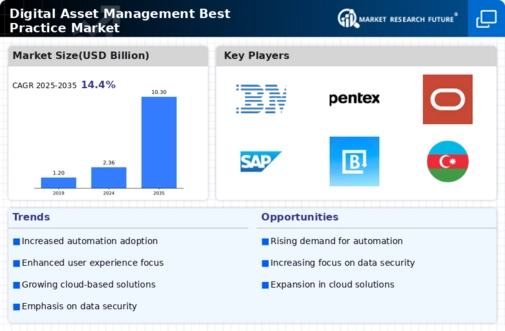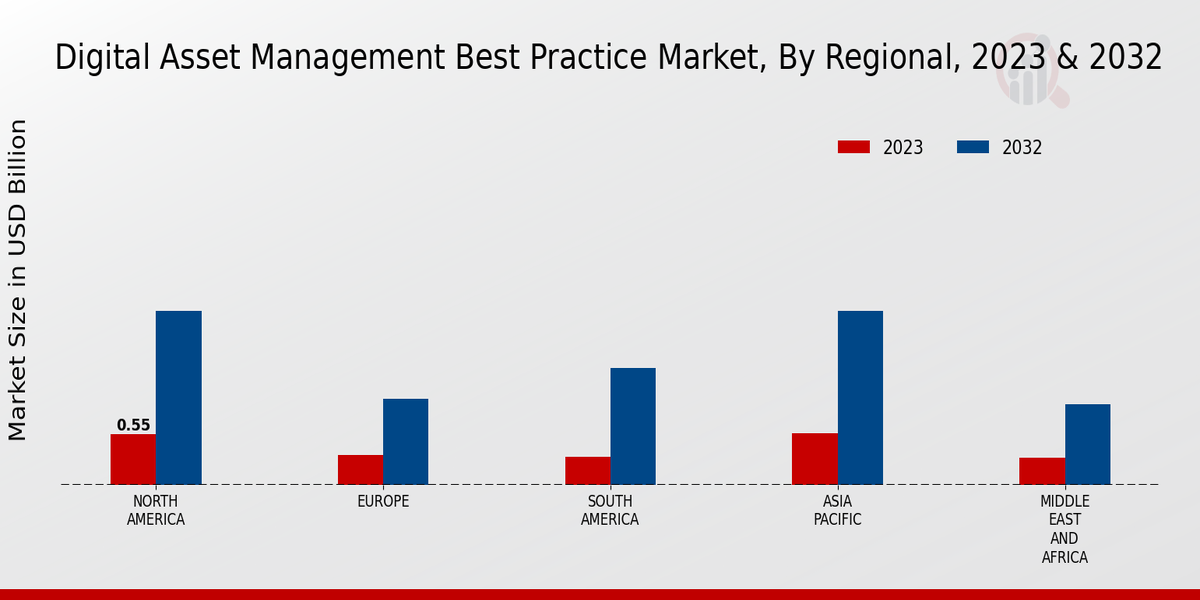Market Growth Projections
The Global Digital Asset Management Best Practice Market Industry is poised for substantial growth, with projections indicating a rise from 2.36 USD Billion in 2024 to 10.3 USD Billion by 2035. This growth trajectory suggests a compound annual growth rate (CAGR) of 14.36% from 2025 to 2035. The increasing adoption of digital asset management solutions across various sectors, coupled with advancements in technology and the growing need for brand consistency, indicates a robust market landscape. As organizations continue to prioritize efficient asset management, the industry is likely to witness significant developments and innovations in the coming years.
Technological Advancements
Technological advancements play a crucial role in shaping the Global Digital Asset Management Best Practice Market Industry. Innovations in artificial intelligence, machine learning, and cloud computing are transforming how organizations manage their digital assets. These technologies enable automated tagging, improved search functionalities, and enhanced security measures, thereby increasing operational efficiency. As businesses seek to leverage these advancements, the market is expected to witness substantial growth, with projections indicating a rise to 10.3 USD Billion by 2035. The integration of advanced technologies not only streamlines asset management processes but also provides valuable insights into asset utilization, further driving demand.
Emergence of Remote Work Culture
The emergence of remote work culture has significantly influenced the Global Digital Asset Management Best Practice Market Industry. As organizations adapt to flexible work arrangements, the need for centralized digital asset management solutions becomes increasingly evident. Remote teams require seamless access to digital assets to collaborate effectively and maintain productivity. This shift has led to a surge in demand for cloud-based digital asset management systems that facilitate remote access and collaboration. The market's growth is expected to be robust, driven by the necessity for organizations to support remote work while ensuring efficient asset management.
Growing Need for Brand Consistency
The necessity for brand consistency across multiple channels is a driving force in the Global Digital Asset Management Best Practice Market Industry. Organizations are increasingly recognizing that maintaining a cohesive brand image is essential for customer loyalty and engagement. As a result, businesses are adopting digital asset management solutions to ensure that all marketing materials, images, and videos align with their brand guidelines. This trend is particularly evident in industries such as retail and consumer goods, where brand perception significantly impacts sales. The market's growth trajectory, with a projected CAGR of 14.36% from 2025 to 2035, underscores the importance of effective brand management.
Increased Demand for Digital Content
The Global Digital Asset Management Best Practice Market Industry experiences heightened demand for digital content across various sectors, including media, entertainment, and e-commerce. As organizations increasingly rely on digital assets for marketing and branding, the need for efficient management solutions becomes paramount. In 2024, the market is projected to reach 2.36 USD Billion, reflecting a growing recognition of the importance of digital asset management. Companies are investing in robust systems to streamline workflows, enhance collaboration, and ensure brand consistency. This trend indicates a significant shift towards digital-first strategies, which are likely to drive market growth in the coming years.
Regulatory Compliance and Data Security
Regulatory compliance and data security are paramount concerns for organizations operating in the Global Digital Asset Management Best Practice Market Industry. With increasing regulations surrounding data protection and privacy, businesses must implement robust asset management solutions to safeguard sensitive information. Digital asset management systems provide features such as access controls, audit trails, and encryption, which help organizations comply with legal requirements while protecting their digital assets. As the regulatory landscape continues to evolve, the demand for secure and compliant digital asset management solutions is likely to grow, further propelling market expansion.
























